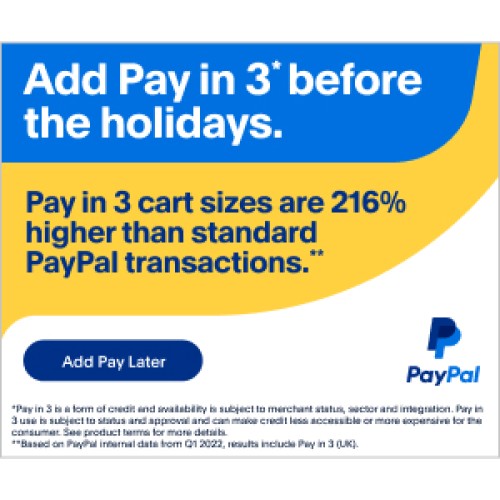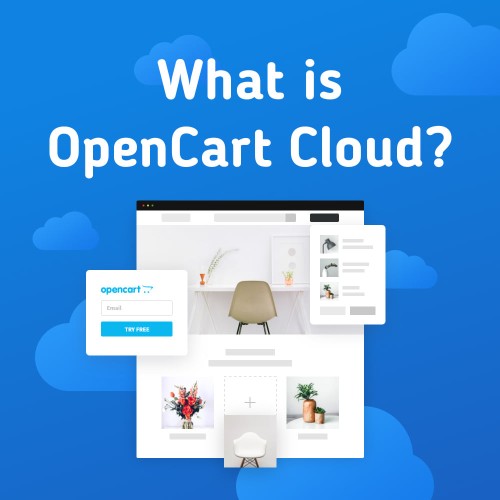Companies that don’t understand the importance of digital marketing for their business don’t last long in this age. As a store, it’s crucial to create compelling content that both engages your audience as well as drives sales for you.
To begin with, here’s all you can do to drive sales with effective content marketing.
Conduct Keyword Research
Keyword research forms the foundation of a successful content marketing strategy. It revolves around getting hold of the right keywords or phrases the audience searches for. When you optimize your content for those focus keywords, your target audience finds you for those keywords and you start ranking well.
To that end, you can use tools like UberSuggest, Google Keyword Planner, SEMrush, and Ahrefs. These tools will help you get hold of the most relevant keywords for your niche and provide data on search volume, competition, and difficulty. When starting out I choose long tail keywords that may have low traffic but are high on search intent. This allows me to rank higher on SERPs and capture some early conversions quite easily. It’s easy to ignore these keywords that have low traffic but I suggest you don’t do that.
Develop Buyer Personas
To create content that clearly is a hit with your audience, start by understanding who they are and what they want from you. Buyer personas can certainly help if you understand what buyers will do on your site and helps you put them inside a sales funnel that converts. They are fictional representations of ideal customers derived from market research and real data from current customers. For example, if you offer company registration services, a buyer persona that caters to the mindsets of those who want services will be great to market to.
Now on to buyer personas. You can create them with the help of surveys, interviews, focus groups etc. with your target audience. Use these insights to gather detailed profiles of ideal customers and add their demographic interests, pain points, and buying behavior to sketch proper personas. Use these personas next time to create content that speaks to them and is tailored to your audience’s needs.
Create High-Quality Content
Creating high-quality content is essential for e-commerce businesses to succeed in today's competitive online marketplace. High-quality content should be informative, engaging, and relevant to your target audience. It should also be optimized for search engines and include relevant keywords. For instance, when starting my eCommerce website on Procreate brushes I discovered that high-quality brushes that appealed to diverse buyer mentalities like Procreate tattoo brushes, procreate anime brushes, and others were completely missing from the market. I also offered a free trial and then filled that gap.
To create high-quality content, start by conducting thorough research on your topic. Make use of statistics to back up whatever you say. Provide value to your audience and experiment with a variety of content formats ranging from social media posts, to blogs, videos, and others. Add relevant keywords, meta descriptions as well as internal links. Doing this makes it more likely for your content to be found via search engines.
Leverage User-Generated Content
User-generated content (UGC) is content created by customers ranging from reviews, testimonials, and social media posts. UGC is a great easy to build social proof and increase people’s trust in your brand. It’s also a great way to access an infinite supply of content without having to create it on your own.
Encourage customers to leave reviews, share their experiences on social media, and be part of user-generated content campaigns. Use a tool like Bazaarvoice to display UGC on your site.
Promote Your Content
Creating quality content is only half the picture. To drive traffic to your website and boost your visibility, you need to start promoting your content. This involves a mix of strategies like email marketing, social media marketing, influencer marketing, and paid advertising.
Share your content across multiple social media channels, and to your email list. If you have a website, you can make the most out of web tracking and collect data about your visitors to re-engage with them on other platforms they use often. Use hashtags to engage with your audience and improve the reach of your content. Partner up with influencers.
Use Google ads or Facebook ads to target your audience and drive traffic to your site. Leverage LinkedIn Outreach to connect with other Content Marketers and collaborate on guest posts or link exchanges to build strong links to your content. Combined, all these strategies will help you outrank your competition on Google and get more conversions.
Audit Yourself and Your Competition
The first step to growing a business through content marketing is understanding how you stand against your competition. Audit your biggest competitors first.
Look at their top-performing content, look at the keywords that drive them the most rankings, and the pages that generate backlinks for them.
Ask yourself the following questions:
Which keywords do competitors outrank you for?
What pages do they have that you don’t?
Which types of content do they publish on their site?
Group those keywords into clusters that can expand into in-depth content. The best thing is that you can always outsource B2B sales and hire professionals who can do research for you. But if you plan to audit your competitors,
If you don’t know whether you need two separate guides targeting a keyword, ask yourself this. Will you be able to satisfy search intent with one resource or do you need two separate content pieces to satisfy search intent? If the case is the latter, you need two separate resources.
Identify What Types of Content to Focus On
In the next step, you need to identify the type of content to focus on to meet distinct goals.
There are three stages of buyer awareness and that’s why we need four types of content
Awareness content
Sales content
Leadership content
Awareness Content-- this type of content drives exponential growth in brand awareness ranging from broader, educational resources your audience searches for online.
Sales-centric content is geared toward driving conversions.
It consists of:
Resources about how the product solves customer pain points
Comparisons of product to similar solutions
Case studies or testimonials from customers
Customer support resources that provide a better experience for customers and encourage repeat purchases.
Thought leadership content attracts the big personalities in your industry. This lends more credibility to your brand. Thought leadership content consists of unique pieces that helped you do something great.
Here’s an example:
Jake Ward frequently posts thought leadership content on LinkedIn. Here’s him explaining with a 14-page presentation about how he took a site in the financial niche from 0 to 750,000 sessions a month using AI content.
The post received 1203 comments, 350 reposts, and hundreds of likes.
It consists of industry predictions and insightful comments that require several years of experience and know-how to put together.
This content except in a few instances doesn’t generate a lot of visibility for you but getting it in front of industry leaders helps you get followers. They share your content on social media which means more leads and more credibility for you. Here David Ly Khim from Omniscient Digital talks about how the newsletter he sends, his bi-weekly podcast, and content on Facebook and Slack has helped his company grow and drive referrals. Content programs don’t have a need to be predictable or directly attributable to growth.
Let’s go deeper into the three components of a successful content marketing strategy.
Finding the Right Balance Between Content Types
There’s no clear solution to define how much of your efforts should go inside each content type. However, top-of-the-funnel awareness content helps you reach hundreds of thousands of visitors. Sales content helps you generate leads and sales which makes it easier for you to hit your lead KPIs. Awareness content by itself doesn’t translate to new sales but it brings visibility to your brand and is more straightforward to build links to.
Awareness content can funnel visitors into other content and specific product pages. It can also provide avenues for internal link-building.
Sales-centric content will drive conversions and generate more sales per site visitor. However sales-centric content doesn’t get too much traffic.
Why?
There are already too many people vying for those spots and chances are someone with thousands of links, and an insanely high DR already sits at the top. This makes it challenging to rank for those keywords and drive meaningful traffic from sales queries. Instead, rely on educational search queries.
Map Out Short-Term vs. Long-Term Ranking Goals
Map out content opportunities by taking into account both short-term and long-term goals.
Look at the root domains your competitor has and use that to map out how many high-quality links you need to a page or the site as a whole to outrank your competition. For instance, ranking for chargebacks might be your long-term goal while something like chargeback reversals may be a short-term goal.
From that point on, you can focus on link building and focus on terms that will be possible to rank within a 1 to 3-month timeframe. The longer-term ranking goals should cover keywords that are supposed to rank over a 12-month ranking period.
It’s an ideal tool to understand how many resources you need to expend on something at a certain time.
When marketing a product ensure you take the omnichannel approach first. Or you can also create an online marketplace where buyers and sellers meet each other. It helps to analyze consumer behavior at scale and therefore identify ranking goals for your content marketing purposes as you understand customers better.
Blog Posts For eCommerce Content Marketing
You can create blog posts to serve a number of roles. Answer customer queries, share business stories, and tell people about your latest products. As an eCommerce business, you can captivate more customers and open a line of communication with existing customers.
A good example of a brand doing this right is Au Lit Fine Linens. They sell everything that can ensure a good night’s sleep and they run a blog offering great helpful articles and posts telling consumers about improving their sleep quality.
Social Media Marketing For eCommerce Businesses
Another avenue is sharing content on social media to create great content for eCommerce and connect to your potential audience. It helps you communicate with your consumers, engage with them and generate leads, nurture them, and convert them into potential clients too.
You can share any form of content for your eCommerce store through social media. It can be a new product line, a video showing your manufacturing process, a video that shows behind-the- scenes and more, or even Instagram comments encouraging your audience to take part in your new launch. And if you use a social media marketplace, you can boost your social media presence and get results for your ecommerce business fast.
One of the best examples is Etsy. Etsy is a platform for third-party sellers to post their art and craft which gives Etsy plenty of real estate to feature interesting content from users active on their platform. They have their hands on every platform Facebook, Pinterest, Instagram, and even Twitter.
In those channels, Etsy shares images and videos of the products they sell along with CTA buttons and text in caption. This attracts customers and they become leads and convert into potential sales in no time.
Buying Guides For Product Features
Another big problem that comes with people choosing eCommerce buying instead of traditional commerce is unlike in a shop they can’t ask questions in real-time about product features or usage.
Buyer guides are a way for you to tackle the problem and a good content marketing strategy for eCommerce stores.
Make sure you are aware of the process a customer goes through before he buys your product. A buying guide is a two-part strategy. You can either add a product buying guide in each product page or create an article around that specific product guide. Wayfair is an excellent example of this.
A brand that is utilizing this strategy and improving sales is Wayfair.
They have stuck to a format for their product guides that includes size, configuration, storage, among others.
This helps them connect better with their audience as they answer their questions.
Infographics – Visual Content Marketing For eCommerce Stores
Ecommerce is nothing but visuals. Infographics pick on this by displaying information in ready- to-understand colorful visuals. They can be helpful when you want to share complex but crucial information with your audience.
Use different colors and captivating visuals to make the whole thing attractive for them.
Walmart does this well.
They have great specific infographics communicating the details of the products they offer, latest deals, and more.
Utilizing Video Content Marketing
Videos are another common and popular medium of content marketing. They help you communicate with your audience online.
Be it a generic post about products or services or making a quick announcement animated videos with voiceovers can help you grab attention, generate leads and convert them to sales.
Use 30-second Youtube videos to capture what you are doing and which product you are launching.
Podcasts
Podcasts are a low cost medium to create high ROI ecommerce content that aligns well with the interests of your target audience. They contribute to establishing your brand’s authority and reach.
Tools and Quizzes
Tools and quizzes are another way to boost your eCommerce business. A common B2C and B2B eCommerce trend in the market is to use quizzes and tools. With this, a buyer can make informed decisions.
A good example of using quizzes is Bushnell an eCommerce site that has buyer guides as well as quizzes to captivate audiences and drive traffic.
Affiliate Marketing
One of the biggest success stories of affiliate marketing is Amazon. With it you get your products advertised on blogs and articles of blogging giants. It helps you expand your global footprint and your audience starts noticing you. They created an affiliate program where publishers or bloggers can sign up to and promote certain products and earn commissions if and when someone buys through the link.
Conclusion
These are some of the ways to generate more sales for your eCommerce business with content marketing. What do you think?
George is a blogger and writer at Kamayobloggers, a site he started to share cutting-edge marketing insights.



Login and write down your comment.
Login my OpenCart Account